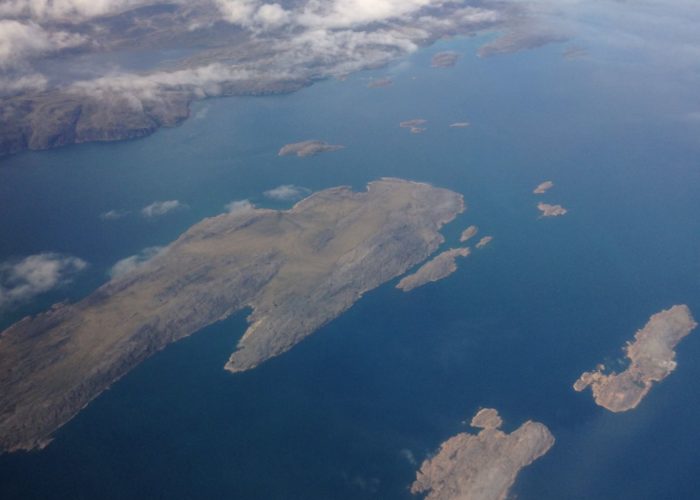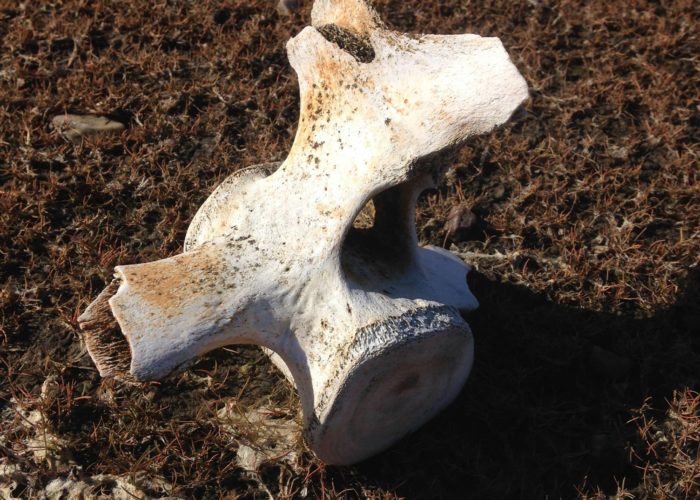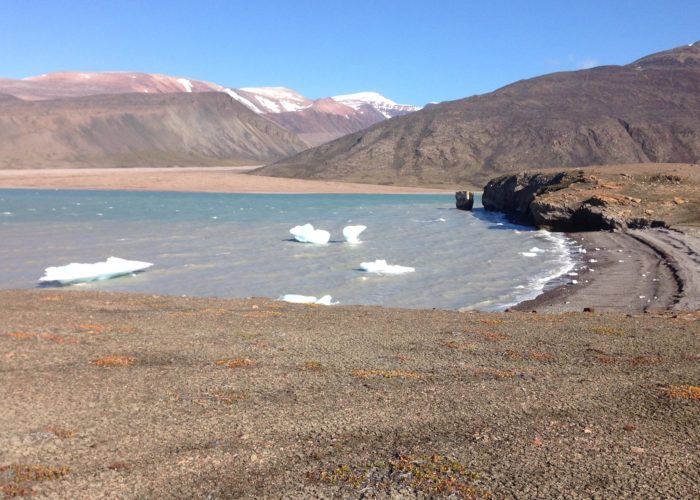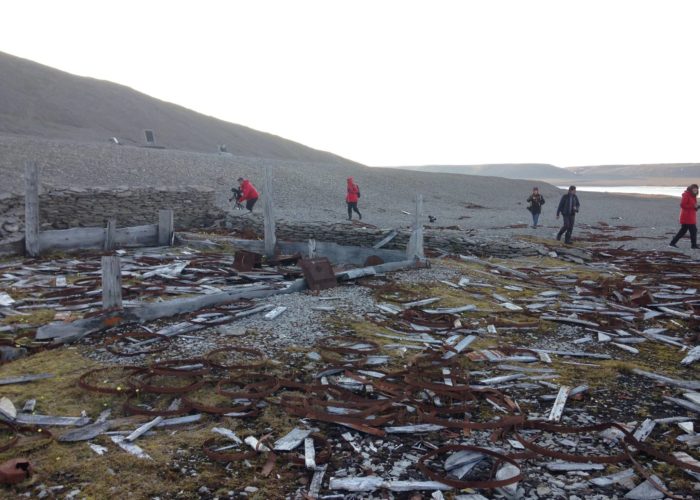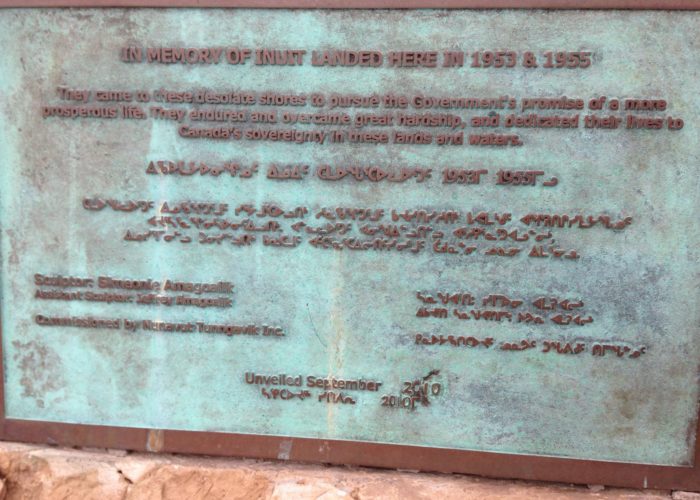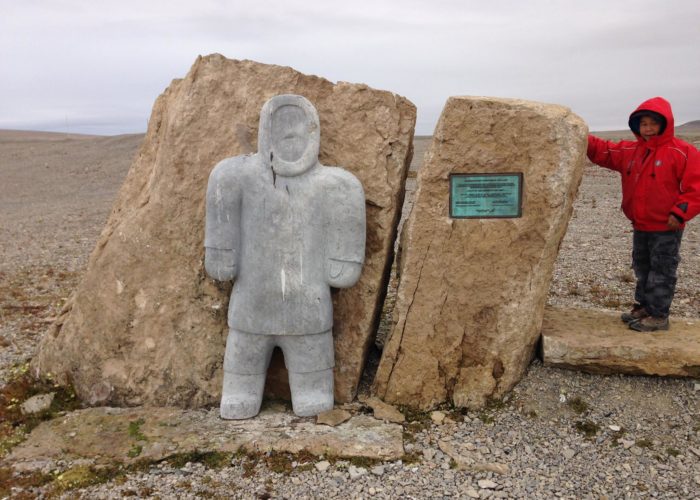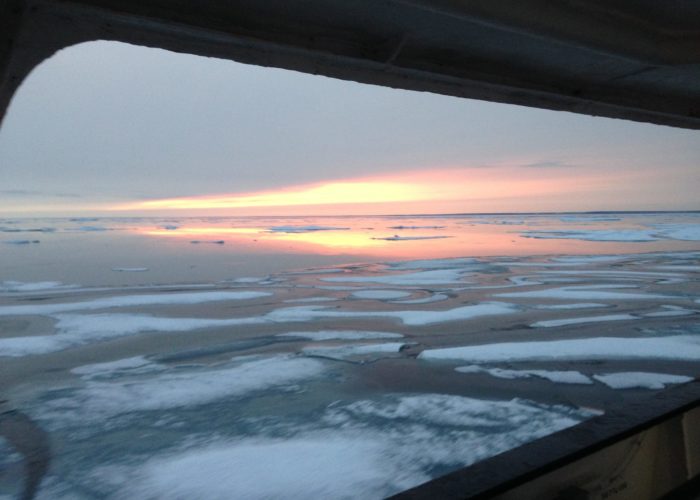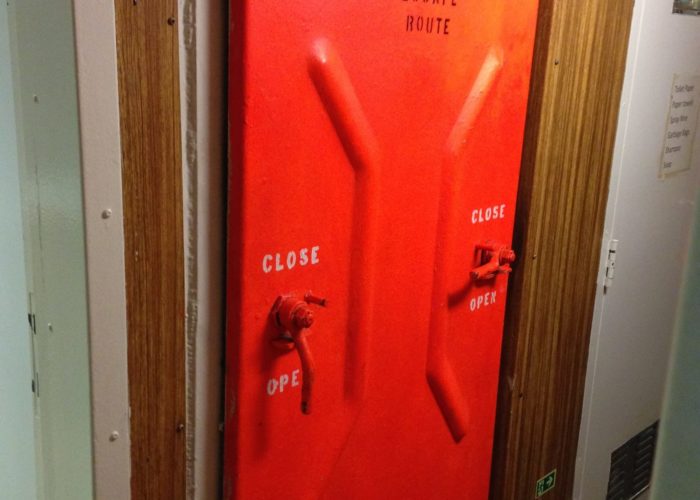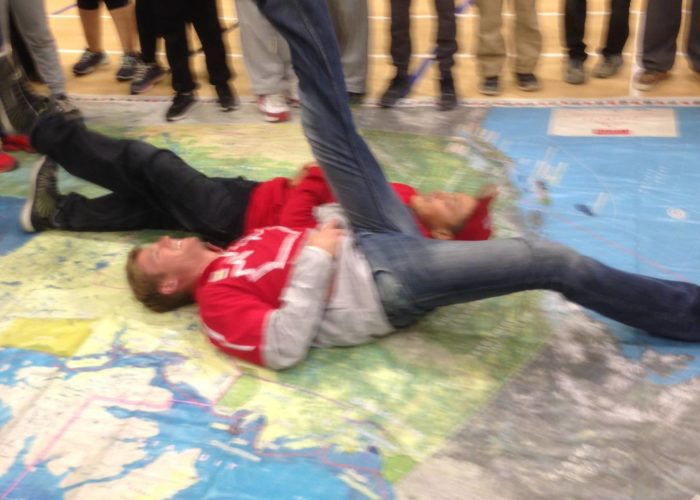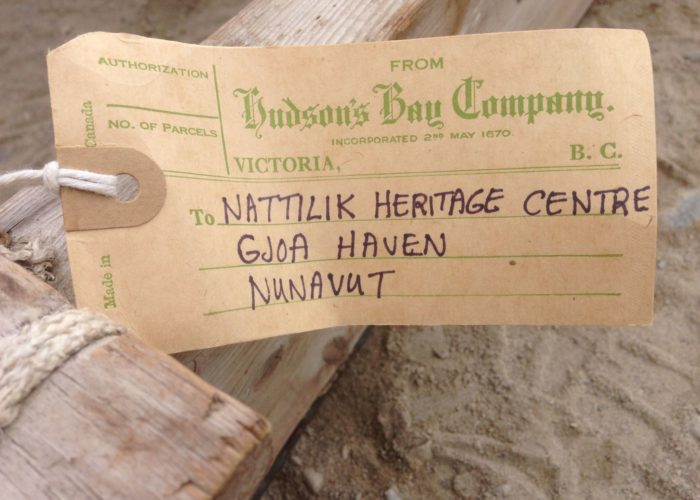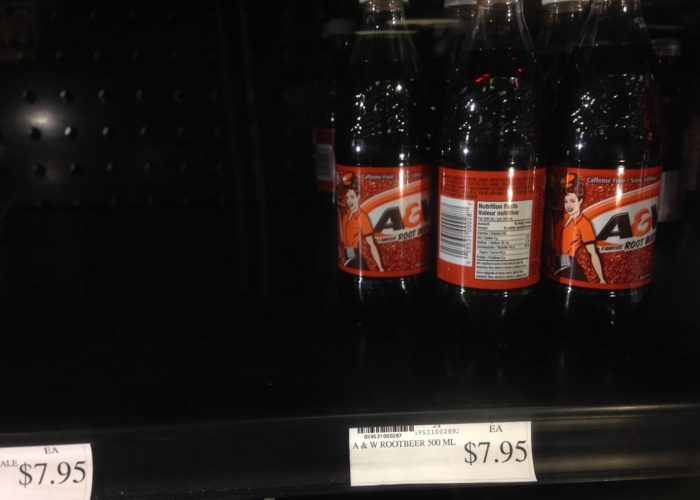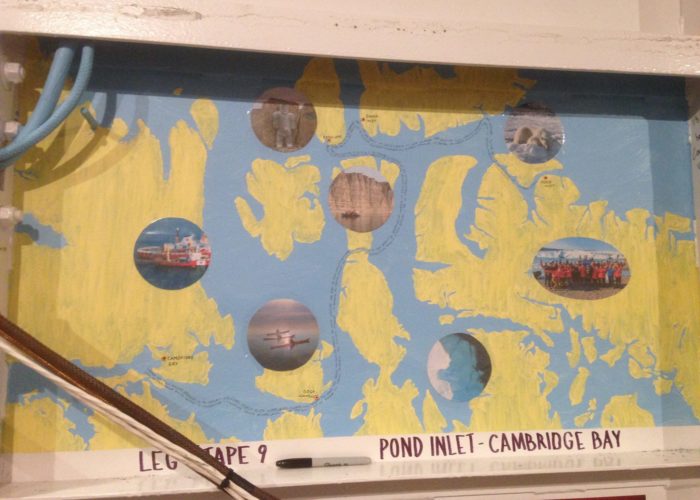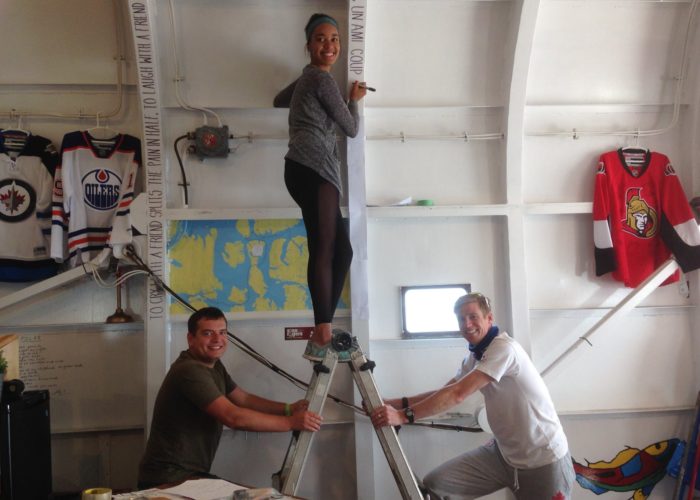
Growing up in rural Alberta, Joshua Riker-Fox’s passion for the outdoors, sports and learning was instilled early on. He loves the pursuit of excellence as an athlete, student and coach. He is an Olympic modern pentathlon athlete and holds an MBA in sport marketing from the University of Calgary.
by Journey Participant Joshua Riker-Fox
What I will share over the next 12 days is a reflection of my time as part of the Canada C3 expedition. I am very fortunate to be a participant and what follows are my unfiltered, hopefully-coherent and certainly appreciative thoughts each day. I hope to have these posted to my website as well. There is some naivety in what I share, which I anticipate will remedy slightly in time, as I learn more about this incredible land, the community of the Inuit and our nation as a whole.
Day 1
Last night’s flight from Calgary to Ottawa landed around 12:30am, and Mel McCann picked me up. We had a quick catch up, sleep and she took me back to the airport for a 9:15am departure. Flying from Ottawa to Iqaluit to Pond Inlet, it’s slowly become more evident who the 20 participants will be within the crowd of many passengers. Now, waiting to board for our final destination, Pond Inlet, our plane will land and refuel one hour into the flight (Iglulik), then continue.
I love small and remote communities so this is a big factor in my excitement. Iqaluit has a population of 6,500 but is in its own way, thriving. The airport is new and it feels like there is a lot of activity in the small community. I really love the mixture of language on landing here; French, English and Inuktuk. I sat beside Omar Sachedina, CTV correspondent. Very conscientious personality and it’s easy to appreciate why he’s successful in media. W5 has a team of three, including Omar, which is filming several pieces in a sort of part-participant, part-media role.
One, if not my only, concern leading into my departure is that I hadn’t decompressed mentally or emotionally to fully appreciate and grow from this experience. I feel in the next 12 days, there will be a considerable amount of time devoted to difficult discussions and introspection. It’s been impressed on us that this isn’t a cruise. The expedition’s objectives and activities are oriented around four themes; environment, diversity and inclusion, youth, and reconciliation. We know these are important topics as we prepare Canada for its next 150 years. It’s easy to lament about this surface-level, but really complex and intimidating when you delve below the safe barrier. It will be interesting to see what each of us has to offer.
Day 2
Monday started early with breakfast at 6:30am, after limited sleep the two previous evenings. It’s a rainy and brisk day in stark contrast to yesterday’s surprising +16c temperature. The 20 of us have varying levels of knowledge about what lies ahead, so there is an ongoing conversation speculating about plans. In particular, today is fairly hectic as we’ve hardly had a chance to even introduce ourselves to everyone on board. We total 57 individuals with respect to the Canada C3 team (who are incredible of which many are doing the full 150 days) and the ship’s crew (who are equally incredible). After breakfast, we left our boat on the zodiacs to visit another ship in the harbour. Zodiacs are mid-size rubber motorized boats that allow us to get off our big boat (a reborn coast guard vessel named the Polar Prince) and be mobile. The other ship we boarded is a retro-fitted cruise ship running the Students on Ice (SOI) program. Canada C3 is also a Students on Ice foundation project, so it became evident quickly that the two operations are tightly connected with staff and leadership overlap. Geoff Green established both expeditions, and is the highly respected and admired person managing each operation (a multi-tasking gentleman overseeing or managing nearly 400 people and two boats now). SOI has about 200 high school students from 17 nations aboard, primarily Canadians, who spend two weeks in Canada’s arctic. This is a gifted group of kids, who are very likely going to be leaders in the conservation field in the future.
In the inlet with us were five other boats. This surprised me as we are in a very remote area, with limited services and a small population. One is Ocean Expedition (the SOI program mentioned earlier). The Canadian Navy is also here (for a government announcement and relationship building with the Inuit community). There is a large fishing boat, which appears to be a Nunavut-owned boat, and there are two private boats. One is a catamaran and one a sailing ship (Polish flag). I never would have expected private boats to anchor in remote northern communities.
Following our time on the SOI ship, the zodiacs brought us into the Pond Inlet community (pop. 1600) for a Federal and Territorial announcement regarding the Lancaster Sound Conservation area, which was unknown to me or most of us. This is a huge expanse of water between Baffin Island and Devon Island. Essentially this body of water between can no longer be used for exploration, seismic work or drilling. This required Shell to relinquish permits it had for the area. From what I understand, the fight to protect this area is over 50 years in the making. I doubt Pond Inlet has had such an influx of people recently, if ever; C3, SOI, media, the navy, and federal and territorial politicians. The ceremony included traditional Inuit musical performances, which were incredible. I still have one song in my head today and I wish I knew what the lyrics meant because it was powerful (I will try to share later). Two throat-singers also performed, which is a unique form of signing. The art was diminished when the Anglican and Catholic churches came to Nunavut (around 1920), but is re-surging somewhat now as Inuit youth are taking ownership. These churches viewed throat singing as a form of shamanism. Incredibly, many members of the community are practising Christians in one of the two churches. I found this surprising and would have thought that the contradiction of joining a faith that was largely responsible for their colonization and residential schools would prevent subscription. In fact, the Anglican and Catholic churches competed against each other for parishioners here and all across Nunavut. It is a complex relationship and I’m thankful to our Inuit team-members who continually educate. The explorers arrived first, then whalers, then the Hudson Bay outposts were installed. The whalers brought missionaries, who eventually asserted sovereignty over the land. In time, RCMP detachments were established as well.
A couple of us managed to visit a small museum briefly prior to returning to SOI for a session, a visit on the HMCS Montreal navy ship and dinner. The session I joined had two Inuit elders sharing stories of their community. I can’t capture the essence of these stories, but take a moment to imagine the harshness and isolation of this area and this culture’s passion for storytelling. The result is a vivid description that extends back to a time before European contact, where survival relied on hunting, shelter and a community’s ability to read the land. It’s remarkable. We are all somewhat familiar with Canada’s northern culture, but to spend time immersed in the community, is sometimes beyond words.
Day 3
After really limited sleep on Day 1 and 2, the participants enjoyed a full night of rest while the Polar Prince drove east toward Canada Point and Tay Bay. 13 C3 staff manage our daily operation; Scott being the group’s leader. There is a robust comms team capturing every moment as well. Today was magical in that the previous 48 hours was a rush with a disjointed team. There was a lot of pressure on the C3 staff to meet deadlines in conditions where so many variables are at play. But now we’ve settled and profound moments emerge without warning; today I woke up to a massive glacier beside our boat. Clear, pure, solid yet vulnerable at the same time.
Unexpectedly I found myself in a conversation with Tom Smith and Jena Merkosak. Jena is an Inuit around 24, who has deep knowledge of her people and land, but also carries millennial ambition and sense. Tom Smith is the type of person you’d want to see a movie of his life. In the 1960s he was stationed in the first RCMP detachment in Arctic Canada. His recount is incredible and I’m hopeful to pull more stories out of him. He is proud to share there were no arrests while he was the Mountie. A tragic reality of the first RCMP detachments in northern Canada is that they were simultaneously deploying Mounties and displaced Inuit in newly-created communities, simply to assert sovereignty on land that did not belong to the Crown or to Canada. Often, this meant that eastern/southern Baffin Island and northern Quebec Inuit, who traditionally hunted caribou were moved to areas with few caribou and forced to adapt to survive. Tom is a wonderful human, late-70s, and a great story teller, passionate about his time here and one who was accepted by the Inuit. Following his RCMP career, he was a judge in BC for over 30 years. One of the most fantastic stories he shared yesterday was that in Pond Inlet, on Monday during the Conservation ceremony, he connected with a person he first met in 1963 – Koko. Imagine, 52 years later since the last time they spoke. They both had tears when they hugged.
As we continued north through the night, our day started in Tay Bay, which is on the west side of Bylot Island. The zodiacs took us onto the land where Jaypootie led a hike. He shared so much with us, at one point finding a polar bear’s sleeping area (prophetic…). While on land, we have a ‘bear guard’ throughout which means 2 – 3 individuals cover a perimeter while carrying shot guns. Understandably we can’t venture alone, though we all wish we could.
The glacier was an incredible sight to wake up to, but the day had more to offer. Mid-afternoon as we progressed through Sirmilik National Park, with Bylot Island on our right (east), the Polar Prince stopped abruptly. You could feel electricity in the air as everyone congregated on the front (bow) of the ship, where a polar bear was napping on a chunk of ice. She had the same mannerisms as my cat; disinterest in us demonstrated by a few big yawns. She eventually stretched a bit, pointed her butt at us and left, skipping from ice float to ice float. If that is the only wildlife I see while here, I will be fulfilled. Passing the latter section of Bylot Island, brought us through its Migratory Bird Sanctuary. A beautiful view, with teeming life swooping up and down. This is a critical habitat for the thick-billed murre, which is kind of like a chubby flying puffin.
Tonight we continue toward Devon Island.
Day 4
This morning began in Devon Island, in Dundas Bay. It’s a beautiful isolated space, where the mountain ranges are a different form than what we saw previous. Devon Island is also where the USA Army does its Mars testing. Jena, CTV and the C3 comms team went into the Bay. It is uninhabited now, but three old houses remain. This is where Jena’s grandmother was born and we are so remote now that this is not an area Jena would have ever visited before. At one point, the RCMP had a detachment here and there was some habitation, but now apart from a handful of researchers on the boat, no one spends time here any longer.
The Legacy Room – There is a dedicated space onboard for discussion around First Nation topics. As the trip progressed from its June start, the room has collected gifts from participants of the first 8 legs. The room is established in partnership with The Gord Downey & Cheney Wenjack Fund. Yesterday and today we spent time learning about the Indian Residential School system. This is a complex and difficult subject, and it’s truly unbelievable how unaware we are because this is something we just don’t talk about. I feel relatively informed, but admit I still only know what is on the surface. I’m thankful I had positive and early immersion in some aspects of the culture. I still remember my dad saying many times when I was young that ‘our ancestors are responsible for a lot of harm on First Nations.’ This topic is popular in the media now due to the Truth and Reconciliation Commission and the National Inquiry into the Murdered and Missing Indigenous Women and Girls. Past reports did not meaningfully move the dial. A quick recap; residential schools officially began operating in the 1830s, with the last one closing in 1996 in Saskatchewan. There are about 142 recognized residential schools, but another 120 or more unrecognized. 150,000 youth are thought to have gone through the schools for which about 80,000 still survive. The mortality rate is reported at 24%. The gravity of the physical, emotional and sexual abuse is horrific. Parents were compelled to release their kids because the threat to all other aspects of their life was too severe to resist. Years later, many of those parents live with PTSD and extreme guilt. This is termed inter-generational impact and to be candid, is why so many of the social challenges we see today persist.
Further along Devon Island, we entered Crocker Bay and toured the bay in the zodiacs and on foot. We stood on a beautiful glacier. Our day finished with an incredible dinner in the helicopter hanger. Words can’t describe the setting. This trip is a privilege, which is not lost upon me each morning when I open my eyes.
Tonight we drive toward Resolute.
Day 5
(attempting to upload photos, w/ limited success)
Today we are sailing east, with Devon Island still on our right (north side). The small Prince Leopold Island is immediately to our left (south), and it is an important migratory bird location. There are three Pauls on board; Paul 1 is a PhD in the water and DNA field, Paul 2 is a PhD in birds (actually ecology, but he’s called the Bird Paul), and Paul 3 is our fantastic cook. I believe Paul 2 said there are over 200,000 migratory birds that use Prince Leopold Island.
There was a concern that we’d skip some intended destinations due to ice conditions. We actually thought we may have an ice-breaker lead us through some parts of the Barrow Straight. This would have been cool! But alas, conditions have improved, so no ice-breaker and we are sticking to Plan A. We stopped in Radstock Bay. While there we saw two musk oxen but from a distance, so they still seem like mystical creatures to me. I hope to get a better view, but they are rare and shy. I saw a seal very briefly and some people saw a narwhale, but I wasn’t so lucky. A proposition was offered to do a polar dip and many took the opportunity to risk their lives… Joking, we had a patrol on a paddle board, and a doctor. The water is 2c. Very refreshing and saltier than I expected.
Beechey Island is where the graves of three men from the Franklin Expedition are laid, plus two men who were part of a search vessel in the early 1850s. There is not a lot to see here beyond remnants, but it’s still remarkable to consider the voyage that was made in 1845 (Franklin made previous voyages including one 1826). 129 people, including John Franklin aboard the British expedition died. Their ships were the HMS Erebus and HMS Terror. In 2014, after years of searching by the Brits, Americans and Canadians the first ship was located. A Canadian search team as part of a Parks Canada-led mission found the wreck of the HMS Erebus. The HMS Terror was later located in 2016 by the Arctic Research Foundation. Two main thoughts/feelings emerged from the visit. The first is that it’s extraordinary to see the remnants and graves, including Northumberland House, which was built by a search party in hope Franklin’s team would eventually return to find it, but it’s also sad to see how many stupid humans visited Beechey Island since 1845. Those stupid humans took artifacts, left artifacts, or otherwise defaced an amazing historical site. The second thought is how ignorant I was in overlooking that to Inuit, this site is not pleasing to visit. After Jena and Jaypootie shared how that expedition represented an era of dominance from outside power. I’m not sure I felt sorrow or pride in visiting this site, as it was just an interesting, remote area with historical relevance. But to the Inuit it is a soiled piece of their territory and one they know is often portrayed with valour to the rest of Canada.
This afternoon we rendezvoused with the Coast Guard vessel Henry Larsen. This ship patrols the northern arctic to protect our water and land. There is limited engagement with other vessels, but they said that if Canada did not have a presence, many other nations would infringe our waters. They welcomed us aboard for an evening event. Along with Zach, Jena, Aviaq, Marta and Val, the Chief Engineer gave us an extraordinary tour. This ship is 99m in length and complex beyond explanation. The engineer wanted to explain many aspects of the operation, but settled on just describing several machines as ‘magic.’ What patience! He then shared that his 14 year career with the Coast Guard was preceded by 14 years in shipping around the world. This man was attacked by pirates!! He was a great Newfie with an ability to tell a story. Tonight our two ships are parallel parked beside each other (I’m sure there is a technical term for that). Our captains could definitely park a ½ ton truck in Montreal during rush hour.
Day 6
Another spectacular day has passed, and as per the trend, one of learning. The days are going by quickly and blending together.
I will start with a (mostly) funny story. Going back three days to our venture in Tay Bay, Tom and David Gray shared this story. David, by the way, is an Artic Biologist and Research Associate with the Canadian Museum of Nature. He’s also my roommate (lucky guy!). Just as we arrived on board, David was switched into my room (or me into his more likely..) so the CTV crew could be together (so cliquey eh .. joking; they have real work to do preparing and editing hours of footage). David is a super cool scientist, he wrote the guiding literature for the entire C3 expedition, cheekily titled ‘Gray’s C3 Coastal Anatomy,’ He leads many of our adventures and I ask him at least 15 questions a day, which may be starting to annoy him. He’s such a nice, nerdy person, and I’m really enjoying that he’s stuck with me in cabin 37. Back to the story; The Wollaston Islands sit just west of Bylot Island and we progressed through this straight while leaving Pond Inlet. I shared a bit about Franklin’s failed mission to navigate the Northwest Passage yesterday in the mid-1840s. After they disappeared, American, Canadian, French and British vessels searched for his ships, the HMS Erebus and HMS Terror. The search parties repeated their efforts from Beechey Island, by leaving supplies elsewhere in Lancaster Sound with the hope that Franklin would find them. You can imagine the darkness and despair these men faced. A question was asked if Franklin’s ship ever found these stockpiles, to which David said ‘it’s not really known, but for sure the Inuit did as they were spotted in years following sporting British attire in Nunavut.’
Today was a gap day as we are ahead of schedule. Tom Zagon presented this morning on the remnants of the HMS Erebus and Terror. He is a specialist on ice, and part of the project that ultimately located both ships. Dr. David calls him the Ice Man (probably not finding it as funny as I do). The ships are largely intact, especially the HMS Terror. It appears it sunk straight down in Terror Bay. What an intriguing presentation through a different lens.
Following this, we took the zodiacs into Sophia Inlet and Griffith Bay. We saw a couple seals and went for a very peaceful walk around an incredible waterfall. This is such remote space; there are no tracks and no real reason for someone to visit this spot beyond science. There are muskox here, but no luck in seeing any today. Upon returning from the trip, we had the option to kayak or paddle board in the bay. Our ship is anchored through the day and now we are leaving toward Resolute. The kayak in Griffith Bay was unreal. I am pinching myself. It is Kajarnaq (‘beauty in the moment surrounded by the scenery’ in Inuktituk language). The group is also growing closer and more open. It is nice to be a part of such an amazing and diverse team. Every person here, is someone you want to hear their stories.
Our day ended with a presentation from Leslie Reid. Leslie’s father flew planes over Nunavut, post-World War 2, capturing aerial imagery of the land. This was the seminal collection of Canada’s north for mapping. As a child, Leslie was immersed in her dad’s work. The sad chapter in the story is that the government made a strategic decision to populate Resolute (Qausuittuq) in 1953, termed the High Arctic Relocation. With one sole objective in mind to assert sovereignty during the escalation of the Cold War, seven families from Inukjuak, Northern Quebec, Pond Inlet and Baffin Island were forcibly moved to Resolute Bay and Grise Fiord (on Ellesmere Island). 1955, more Inuit families were moved. The Royal Commission on Aboriginal Peoples described this as “one of the worst human rights violations in the history of Canada.” These people were not equipped to live on a desolate island with no support and limited wildlife, and one that was not conducive to their hunting and survival skills. Resolute’s Inuk (Inuit people) sometime say ‘we are human flagpoles.’
Day 7
This morning we awoke in Resolute Bay. Resolute Bay has a population of around 200 – 300 so it’s very small and very isolated. Interestingly, in the 1970s it was Canada’s busiest airport. This was during the exploration boom. There is a busy transient population here for exploration, resource and defense purposes, but they are fairly isolated and I don’t think they interact with the community regularly. Today was a big day and I have a lot on my mind to try to share in as few words to keep you engaged.
Our start was on the shore of Resolute Bay, where Allie and Susan Salluviniq welcomed us. Susan is Resolute’s mayor and Allie is one of the original individuals stranded here. To explain; in 1953 and 1955 the Canadian government forcibly moved families from three Inuuk communities, establishing Resolute Bay. I shared this yesterday, so I’ll try to keep brief. This was a project by the government to artificially build a ‘community’ so it appeared these northern islands were rightfully Canadian. The families were lied to; told they could return home, told there was a lot of food available, told there was housing and they’d be supported. When they arrived there was nothing – absolutely nothing, and they suffered through their first winter scavenging for driftwood to build shelter and hunting in difficult land. Susan’s words ‘We Inuit are survivors’ hit us in the heart. These people anticipated hunting, but to survive they needed to fish, which was a skill they did not have. Allie shared that when they were dropped off the ship, ‘Even the dogs cried.’ The government solved the fishing challenge by coercing Inuuk from Baffin Island to go to Resolute, again under false pretenses. On the shore, there is a monument that Allie resurrected of giant stones in the place they landed. Amazingly, the Canadian government had serviceman living a short distance down the road in proper housing, but the Inuuk were not allowed to interact or be in their space. Over time, these families built their roots and now there is a very warm community and about 20 years ago the government apologized. Allie says he loves this space and it’s home now. I filmed his words and hope to share with you!
My brain is busy with reflection. We awoke in Resolute Bay, to one boat – an opulent yacht (Archimedes) sharing this peaceful space with us. Nothing else is in the bay. The contrast of a once-displaced, underprivileged community against a boat representing conspicuous consumption left some of us feeling a bit off. It seems insensitive; immeasurable wealth vs unavoidable poverty. Perhaps an ambivalence to the symbolism, perhaps I’m overthinking. I’m kinda wealthy (relatively speaking, along with our whole ship), so I shouldn’t judge.
We visited the Polar Continental Shelf Program. This federal facility can house up to 237 scientists and support staff at any moment. Very fascinating operation that oversees logistics (in varying degrees) for research, resource exploration and defense operations. The building and its operation has grown substantially over the last 60 years. It is clean, modern, has a gym, cooks and is technology-forward, in contrast to its neighbours 3km down the road. I really enjoyed seeing this facility. David Gray ran into a mechanic who he started working with over 30 years ago!
The flame dims a bit on these immersive experiences after a few days and everyone settles in. Every day is absolutely incredible and I’m so thankful, but one eventually reflects deeper about what one is doing. It took until today to see a couple others share similar feelings. There’s a point where ‘I am so lucky to be here,’ turns into ‘I feel a bit guilty.’ Sometimes you get lucky so I can rationalize it that way, however this project and the millions of dollars behind have a specific purpose that should improve our knowledge and compassion as a country. I hope it will, but it will be so difficult to move the dial. Where does that leave us? We arrive, observe, interact, and depart. We risk being just tourists, which hints a bit of the elitist mindset that brought Canada here. The intent of this expedition is 100% driven by clear objectives and led by an incredible team, and it aspires to very high goals. AT times today I wondered ‘What if it’s not enough?’
Our Resolute visit was at risk earlier this week due to ice floats and I’m so happy it worked out. The people of Resolute Bay are warm and affectionate, and they are certainly resolute. At the community ceremony, a young boy named Elijah sat down beside me, introduced himself with a big smile and chatted away. Filled my heart.
Tonight we drive to Leopold Island, which we passed from afar two days ago. It is a migratory bird sanctuary with 200,000 birds and 100,000 nests. It stands 300m above the shore line, in a circular shape like cork. We’ve reached the highest northerly point and begin our journey south. My feet hit the floor from my top bunk, every morning with eagerness for what’s next.
Day 8
Sunday has been a calm day. We anchored at Prince Leopold Island and zodiaced into the Bay. I did finish last night, 2am, standing alone on the top of the ship as it progressed south through calm waters and with an incredible sky. Impressively, we have wifi at times here, which I find amazing. The signal strength depends on the angle we have relative to the equator, which has varied between 1.5 and 4.5 degrees.
Correction from yesterday; the island has about 200,000 thick-billed murres and an additional 120,000 birds of two other breeds. The live on this ridiculously tall ridge (265m I believe). The baby murres, once mature enough and around this time of year, dive off the side into the water. They can’t fly yet, so they float for a few weeks toward less icy water until they get those skills in order. Brave buggers. Sometimes dad pushes them. Daddy murre accompanies them on their trip. Generally they mate for life so mom and dad murres find each other and return the exact same spot each year. Bird Paul shared a story of a bird that his colleague tagged in 1982 and then 30 years later while tagging again on the side of this ridge, grabbed the same bird again. The bird PhDs are crazy because they belay down the sound of the face of the ridge in climbing gear and use a retro-fitted golf ball grabber with a metal loop on it to capture the birds.
Our intention was to land at Port Leopold and explore the island, but this was cancelled so that we could reach the Bellot Straight at the right moment. This is necessary as it is a narrow passage and is most ideally travelled when the current is neither travelling in or against your direction (slack water). The Captain’s goal is to arrive at the Straight at 4am, so that he can select the exact moment to enter this very narrow space. It should take about two hours to pass through, and then we’ll travel on the immediate west side of Boothia Peninsula. Boothia is the most northerly land mass of Canada’s mainland.
Right now we are heading south sitting between Somerset Island and Brodeur Peninsula. Captain Stephan Guy pensively shared this is ‘special and truly what sailing the Northwest Passage means.’ He is an incredible person. Spending any brief moment of time with him and you immediately appreciate his level of intelligence and the fact that his brain is continually calculating many variables. We passed a Russian passenger boat, which brought up a lot of conversation. There are two recent Canadian citizens on the C3, from the Ukraine so for them it struck a chord. For Stephan, he blew the horn and the Russians responded which he really appreciated likening it to an international handshake. A moment later we discussed access to territorial waters and he said these ships can access our water as they wish. He feels this is a major concern for the future as accessibility increases and we haven’t established firm laws to protect our space yet. And he said, the Russians and Norwegians would absolutely not allow us to enter their water unannounced. Include the Inuit’s position and concerns on tourism and the dilution of culture, and the precarious situation we will inevitably face becomes more concerning.
We had a few other tasks this afternoon and then Jason led a workout in the helicopter hangar. It was well attended by half the group. That is a neat bucket list item; burpees while the chunks of floating ice pass by in the Canadian Arctic!
Tomorrow, we are up around 6am to watch our entry into Bellot Straight!
I’m getting the feeling I am going to miss this beautiful space.
Day 9
This is a little delayed as our internet was down. What a luxury to have any internet in the middle of the Arctic! We are back online now, in Gjoa Haven ![]()
Driving through Bellot Straight was really beautiful. It is about 250m wide, and has approximately the same depth. Somerset Island is on the right (north) and Boothia Peninsula on our left (south) through this narrow passage. Captain Stephan is happy that it went smoothly as the margin for error is quite small. As we exited the straight, there was a second Russian passenger ship, like we saw yesterday. There is a Russian-Canadian crew member on-board; stereotypically old, crusty and doesn’t talk a lot. He did say, with a deadpan tone, ‘They are probably spies.’ Comforting..
We turned south to head down Franklin Straight, with Boothia Island on our left (east) side. The water is incredible – either very clear or filled with large ice floats. The drive along Boothia can take 10 – 20 hours depending on conditions. Boothia is a most northerly chunk of mainland Canada. Somehow we ended up signing Stan Roger’s ‘The Northwest Passage’ on deck. We did not do the song justice, but it was a powerful moment as the lyrics resonate so much while you are in the water.
Not long on our journey south, and two French sailboats appear in the distance, appearing stuck in between ice. There is a lot of ice in this area which the ship drives around mostly and over, when necessary. I can’t imagine sailing up here! That seems risky. Both boats had families with young kids running around on deck in their snow-suits. They were able to follow us through the water as the Polar Prince cleared a path; such a Canadian moment.
As it was a day of mostly travel and no stops, we enjoyed the view, the wildlife and the stories shared amongst a group that is integrated now. It’s a great mix of interesting folks. It was Omar Sachedina’s birthday so we also sang him a very off-key happy birthday. Most participants deliver a short presentation at some point and it was my day. I linked on C3’s themes (youth) with activities I am involved with at home. The day ended with Jim (C3 team), Bird Paul, Anique and Scott (C3 leader) playing guitar and singing. A super Monday night.
Day 11
Today we spent our time in Gjoa Haven. This is a hamlet of about 1000. The temperature is surprisingly warm – 15c. The morning involved a tour and a visit to their historical centre, which was informative and modern. It is also the main destination for the traditional Inuk goods of this area; in particular carvings. Inuk art has become famous around the world for its distinct style.
Next we visited the school, spending time with the community. A few of us spoke; Scott, Bird Paul, Charlene, myself and Anique and Jena played two songs. I mentioned the Arctic Winter Games briefly when I spoke, and Scott thought it would be funny to have someone challenge me in a traditional Inuk sport. Scott did not mention this to me prior! Otherwise I may have stretched . A really nice kid was brave enough to come up and ‘leg wrestled.’ Harvey, my competitor, taught me how it works. We did five rounds and he easily beat me the first four. He told me try harder, to which I replied ‘I was trying my hardest.’ I won the last round, maybe because I tired him out! That was the highlight of my day. We all know sport can be a great connector. Seeing ‘Team Nunavut’ jackets upon arrival this morning reminded me that sport’s reach extends to all corners. These kids were extremely welcoming. I really enjoyed our time.
The toughest part of the day is seeing the deep challenges the community faces. Many of the youth are overweight or obese, because they cannot or choose not, to eat healthy. Due to the climate, vegetables are uncommon and ready-made meals a norm. Healthy food is subsidized, but is still difficult to get onto the plate for some reason. It is also tough to see such a beautiful place not well-loved. As in previous communities, there is a lot of garbage. I say this based on my value system, and it’s probably not fair for me to draw judgement as I do not understand their challenges and culture.
A highlight of the day was Dr David Gray’s presentation of a sled to the Historical Society. He brought the sled here, which had sat in storage in Ottawa for the many years. The sled is significant because it was used to March 1948, by the HBC post manager at Fort Ross (east end of Bellot Straight) to travel to Gjoa Haven (about 475km distance). Lorenz Learmonth was closing down the station but weather deteriorated so he wasn’t able to fly out with everyone else and he had to walk the full distance, with this komatik (Inuk for sled).
Tomorrow we spend our day in Gjoa Haven again and then overnight toward Cambridge Bay
Day 12
I got a run in today, which was super nice. I ran around the bay area, which is quite rough, but has nice views. Our main component of the day is an event bringing together the Inuk community, the Norwegian embassy (Ottawa), the Fram museum (Oslo) and Canada C3. The evening included traditional food, dance, music and a lot of education on the role Amundsen played in the discovering the Northwest Passage. Amundsen was Norwegian and successfully navigated in 1905. Unlike Franklin, he absorbed the Inuit knowledge spending two years to prepare on Gjoa Haven for his expedition. Gjoa Haven has a population of about 1000 people and they take pride in Amundsen’s adoption of their ways. He truly admired the Inuk people and his diaries capture that affection. They weren’t able to understand each other often with regard to language, but otherwise there was a true relationship of teacher and student. At this ceremony, the Fram Museum, which houses many artifacts from the expedition in Oslo, gifted several diary reproductions of Amundsen’s.
The music was fantastic. Anique played as she most often does, but also a member of the ships’ crew (Jim from Newfoundland) made a special appearance to play the accordion. You would not have guessed but square dancing is really popular in Inuk culture! A group of really cute kids led a dance, and then randomly pulled in strangers to join them. Somehow of 300 or more people in the audience, I was pulled in. Pretty funny. My final parting highlight was tracking down a piece of Inuk art I wanted. The artist is considered a ‘young up-and-comer.’ Inuk carvings are a big part of the artistic culture in the Arctic and the work is increasingly popular for collectors in the south. With the help of the young friends made in Gjoa Haven and our little crew of C3 friends, we went to Louis’ (the artist) house. His mom had to get him out of bed, and he happily sold me a beautiful polar bear he finished that day.
As our zodiacs pulled away toward the Polar Prince, I felt a lot of happiness for our time here and sadness to wave goodbye to these kids. They are such welcoming, warm people and their smiles will carry in my memory for years to come.
Day 13
It’s incredible to come to realize that today is our last full day. Most of our day is spent sailing toward Cambridge Bay, though we will stop in Jenny Lind Island. This morning we spent time reflecting on the trip. These moments are always emotional. There is no way to get around it! It sure makes me appreciate the time it takes to get to know someone and how the first impressions we make have so far to evolve. A ship with this many leaders, in such a variety of contexts, brings so much to each participant. It’s a vacuum in time, a bubble or a wormhole that we each fell into.
Our day largely involved prep to wind down our footprint on the ship and prepare for Leg 10’s arrival. But there was still a lot of fun and adventure included. Jenny Lind Island was a ‘wet landing’ meaning wear boots because you’re getting wet! The bear guard was assembled as per usual and we were allowed to wander inside that zone. I shared some quality conversation with team members, and then ventured alone. The peacefulness and serenity are vividly in my mind today. It’s a very moggy place, and sadly there were many dead birds scattered around. Bird Paul concluded it is likely due to avian cholera. On my solo walk, I found a polar bear scull. It laid perfectly flat looking towards the water and I didn’t touch it. About 20m away, I thought I found its lower jaw, which had one large pointer tooth remaining. I reunited the two parts and let it be.
From our first landing, a problem I’m sure I didn’t face alone is the need to pee, and the corresponding lack of trees necessary to do so. By lack, I mean zero trees as we are north of the treeline. I found rocks when necessary, but didn’t think that was a great lasting impression to give everyone. On the open expanse yesterday, I took the PhD’s advice to just go and hope everyone understood what I was doing. In this ~5km x 5km area, I hope I didn’t offend anyone. It’s Day 12, oh well.
Our last team dinner marked the end of the journey. Many laughs, many stories and a few tears filled the evening. A remarkable energy grows within a group that is motivated and isolated – key ingredients. This journey is a privilege beyond words. Thank you Canada C3, Geoff Green, our amazing team led by Scott MacDougall and Susan Finlay, the Polar Prince crew and Captain Stephan Guy, to the many welcoming Inuit communities that took us in, and to Aline Lafreniere. And of course, to the 19 participants who somehow also were met with this stroke of luck to join Leg 9, Pond Inlet to Cambridge Bay.
Day 14
Transition day as we leave the Polar Prince this morning and Leg 10 participants move in. This has been a serious immersion in the ‘ship life.’ Cambridge Bay is a hamlet of about 1700 people, similar to Pond Inlet where we started. Oddly the weather on the book-ends of the trip were the same; cold, wet and windy. The days in between beautiful though. My first stop was the RBC! But alas, it was not open. I was really looking forward to visiting branch staff. One of my pentathlon colleagues from Ontario, Dawn Watson, linked me up with two of her friends that teach in Cambridge Bay and they were nice enough to come visit during our short stay. Paula and Chris also gifted Valerii and me with caribou meat. As is always the case in the North, folks share. We took in a short tour at the High School, which has a Discovery Centre; a very impressive museum and collection of Inuk history. And then, it was time to go…
The flights home; Cambridge Bay to Yellowknife to Edmonton, and then on our individual ways after saw the slow shedding of team members. It is heartwarming and wrenching at the same time to give thanks and say goodbye. Our boarding at the CB airport had the same flurry of activity we experienced in Pond Inlet when Leg 8 was departing. A highlight was seeing Mark Tewksbury who is on Leg 10. He is everything you’ve seen in the media; open and warm. We had a nice conversation, which seems to happen every few years when we bump into each other. In a rare departure from tradition, I was able to offer him advice!
When I spoke to the team a couple days ago, I opened with Steve Prefontaine’s timeless guidance ‘To give anything less than your best is to sacrifice the gift.’ As I reflect on our next step now that this journey comes to a close, Canada C3’s themes of reconciliation, environment, diversity and youth are circling through my mind. It won’t be enough that we were deeply touched on this wonderful expedition. Any change for the better, in a world that often seems to want to push us backwards, will require all 20 of us to give our best using the unique tools that brought each of us to the Polar Prince on August 12.
Qujannamiik!

